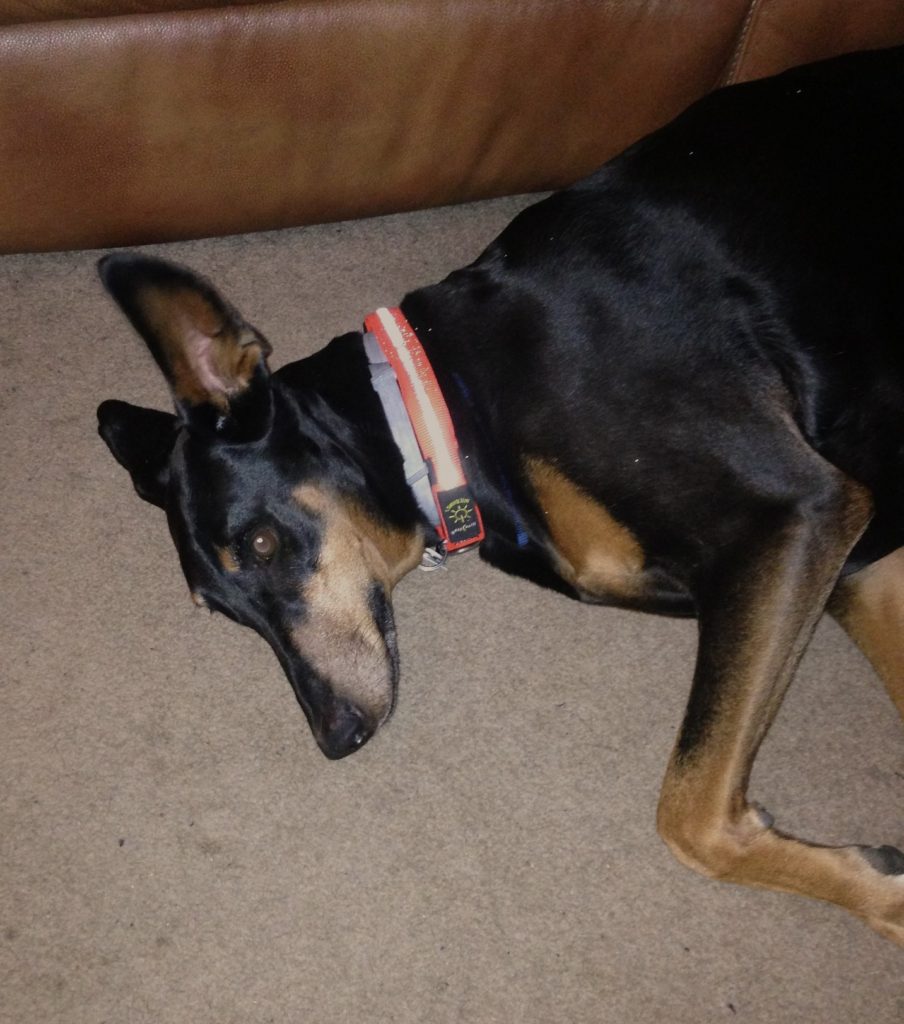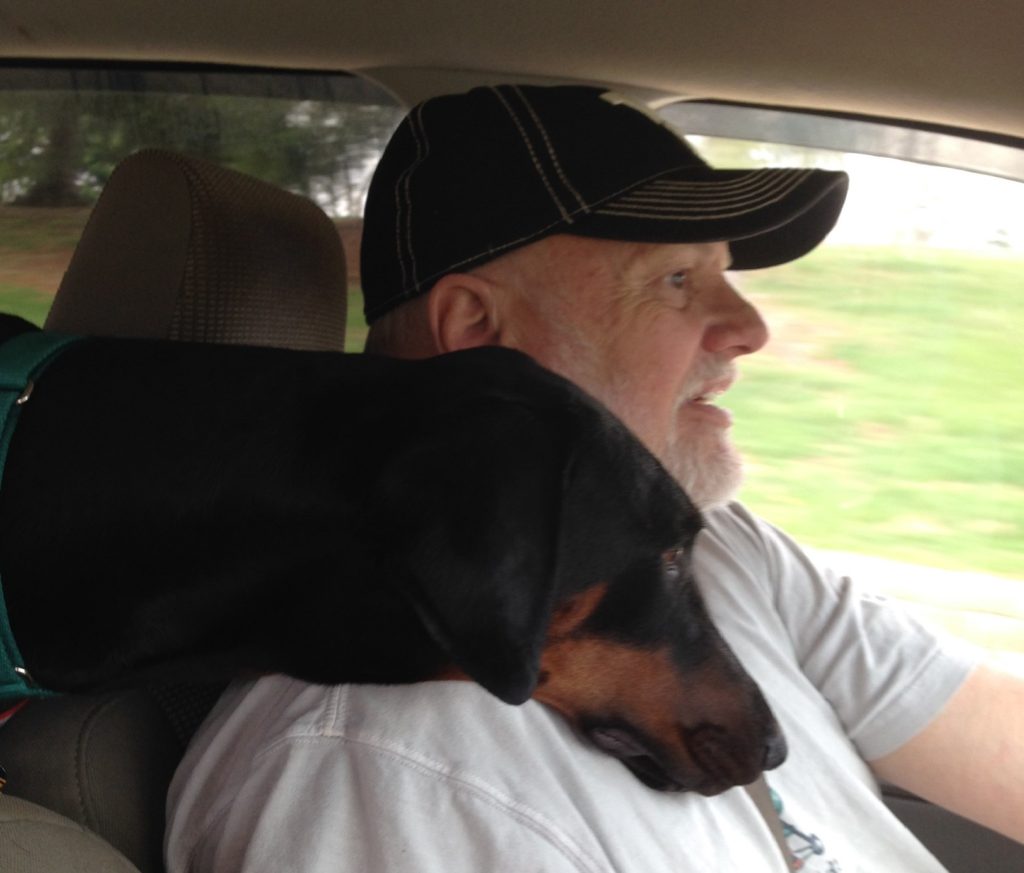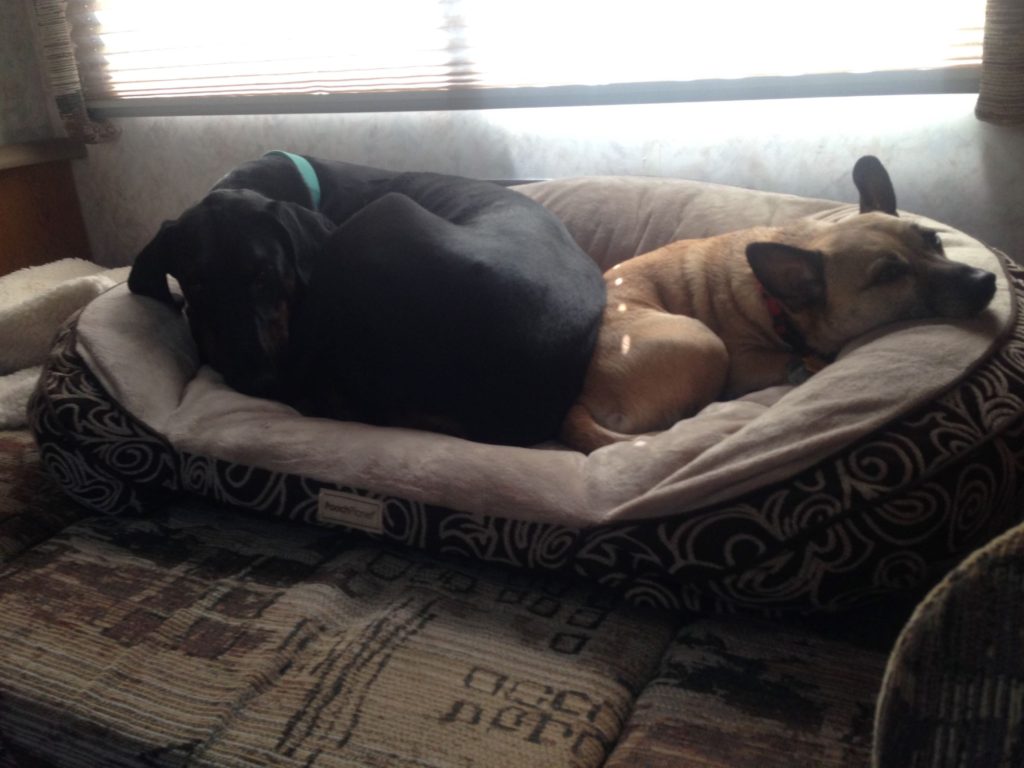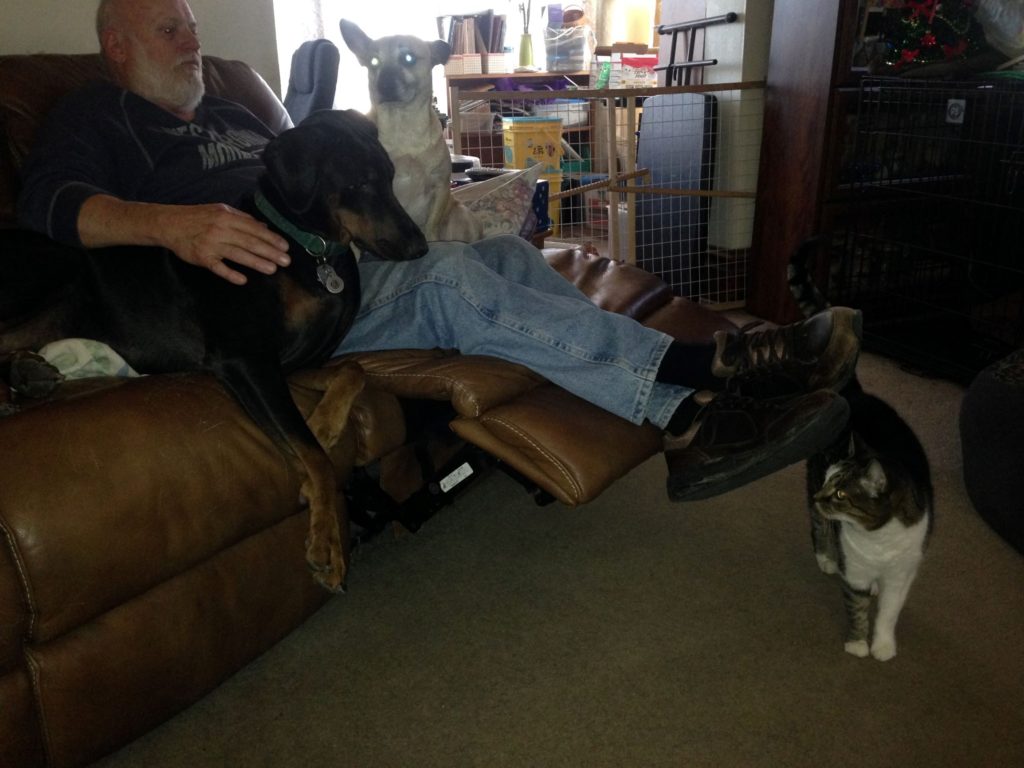You would think that after almost 70 years of living on this earth it would get easier to accept the loss of a four-legged family member. After all, countless others have preceded this one to the Rainbow Bridge.

I don’t personally know anyone who has not experienced the loss of a pet. I do know some people who no longer share their homes with pets because they want to avoid the pain of another loss. I probably know someone who never had a pet, though I can’t think of one at the moment. Allergies and other factors do keep some homes pet-less; but there are often breeds that are less likely to trigger allergic reactions.
Losing a Pet is Hard
Losing a pet is hard. And the longer we have the pet, the more it seems to hurt to lose them. I ran into a woman at a university veterinary hospital who was explaining all of the steps she was prepared to take to keep her aging dog alive. She had planned and budgeted for organ replacements, joint replacements, and all manner of medical interventions. That was many years ago, and I suspect that she suffered bitterly at the loss of such an important part of her life.
We have been known to spend small fortunes on surgeries, emergency clinic visits, and routine medical care for our pets. Still, they do not live even close to as long as we would wish.
We Keep Going
I guess we prescribe to the “spread the love” theory, because each time we lose one, we invariably bring home another. Not a replacement, ever, but an addition – one who needs love and care. Our pets, and there have been many, are generally rescues. Some have been found, some have been given to us, some have been adopted through formal rescue operations.
Each pet has had their own story, their own personality and their very own place in our lives. We really have been blessed with amazing animals that have shared our lives.
This last loss was just as hard as all the rest. KayDee was our third Doberman Pinscher. We adopted her from the Doberman Underground Rescue in WV. She was our second dog from them.
Sweet, Sweet Ava
Previously, we had adopted Ava, a senior dobe that was relinquished to a shelter by a family that had her for the first EIGHT years of her life. The report we got said they gave her up because she was getting nippy with their children.

Thankfully, she ended up at the rescue, where vetting showed she had severely impacted teeth and a thyroid imbalance that causes a laundry list of symptoms, but is easily corrected. With proper dental care and thyroid medication, she came to live with us. She was withdrawn and reserved at first. She was more comfortable in her open crate in another room than with the family. Eventually she came out of her shell, and out of her crate, and joined the rest of the household piled on the couch.

Dilated Cardiomyopathy (DCM)
Hypothyroidism is just one of the many problems this breed is prone to develop. Within six months, we discovered our Ava also had Dilated Cardiomyopathy (DCM). Far more serious and harder to treat, DCM is common in this breed, and causes weakening of the heart muscle. This leads to congestive heart failure. Fortunately, there are drugs that treat the symptoms, though they don’t cure the disease. They are very expensive, but with help from the rescue and others, we were able to relieve the symptoms of Ava’s disease. I have said that after her diagnosis, she never knew she was sick. The meds are that good. Eventually her heart gave out, but she spent a wonderfully loved 18 months with us and we were blessed to know this sweet, sweet soul.
I will always remember how much she learned to love traveling with us. Her first camping trip was a bit high on her anxiety scale, but before long, she was eager to go as often as possible.

Doberman #3
When we were ready for another dog, we returned to Doberman Underground to ask them to watch for another dog for us. We only asked that this dog not be as old as Ava. Adopting a senior dog is a wonderful thing, and we will do it again, but we were hoping to have this next dog for a longer time.
I should say that we generally opt for adopting dogs around two years old. Since, until recently, we both worked full time, puppies were just not a good fit for us. Puppies need lots of attention, training and patience.
Our Theory on Adopting Puppies
Our working theory is that sometimes people adopt the cute, cute puppy, but don’t understand the level of effort needed to properly raise a puppy. That pup does not come into your home knowing how to be a good pet. He needs house trained. She needs to learn that chewing is to be limited to things other than the furniture and your fingers. He needs to learn that there are words to pay attention to. Many puppy owners actually get through the house training, the chewing, and the playful rough-housing. However, at that point, they have used up every shred of patience God gave them.

Just as the pup is about ready to become a calm, relaxed pet, the owner gives up and takes the dog to a shelter, or offers it for sale, otherwise abandons the dog. Why? Because after dealing with one to two years of puppy-ness, the owner is holding a huge grudge. They are angry about that couch, that carpet, and those shoes. So much that they just don’t even like the dog anymore. To say nothing of the fact that it lost the cuteness months ago.
Don’t misunderstand. I am not saying this is common to all puppy raisers. Just that is does seem to be common enough to keep the shelters and rescues supplied with young adult dogs looking for a new home. Many families, including ours, have adopted dogs this age, and are blessed with good pets. “Why would anyone give this dog up?” we ask. But we did not know it as a puppy.
A two year old dog has developed the attention span to learn more quickly. We have adopted several dogs that needed house trained. Only to find that they quickly learned house manners and the expectations of our “pack”.
KayDee’s Story
KayDee had separation anxiety. That is putting it mildly. KayDee could not stand to be without contact with people. Her original owner raised her from a puppy. We don’t really know much about how he raised and trained her. We do know that he lived alone with his dog, that he worked midnight shifts, and that his Doberman Pinscher was his family.
Just before KayDee turned two years old, her owner and companion went to work one night and never returned. Through no choice of his own, he effectively abandoned his dog when he died that night. That’s how it must have seemed to her, at any rate. She must have been terribly confused. At some point she was collected from the house by strangers and taken to a noisy, crowded shelter. Shelters must be a frightening place for sensitive dogs.
Fortunately, before long, the shelter allowed a rescue group to take her to a foster home. Foster homes aren’t quite as loud and frightening as shelters, but from the dog’s point of view they must still be confusing. And for a variety of reasons, her adoption was delayed, so she spent additional time in the foster home, with multiple other dogs.
A Home For KayDee
She seemed perfect. The right breed. The right age. She seemed a little high-energy for our smaller dog, but we were confident she would settle into our calm household.

For the next five years, we waited for her to settle down. She was probably the most challenging dog we had ever adopted. Her separation anxiety knew no bounds. And when we left for work – she was miserable. She expressed her unhappiness in multiple ways.
Although we were certain she had never gone without good food, she was a monster around food. She had to be reminded not to be aggressive when getting treats. She would manage to get cabinet drawers and doors open to steal anything edible. Counter-surfing was common.
One day, we forgot to put a canister containing a bag of flour away. We came home to flour covered floors, walls, furniture and a dog more white than black and rust!
Separation Anxiety is Real
We only put her in a kennel one time, to go out of town for medical reasons. Our research of local kennels led us to think that we had selected a kennel that understood dobermans. We underestimated KayDee’s separation anxiety, and overestimated the kennel staff. Two days later we collected a traumatized dog, and we never left her with strangers again.
But for all of the challenges, she was part of our family! She flew through obedience training and as long as she was with us, she would do anything we asked. Displaying the intelligence we loved with this breed, she learned quickly and rarely needed leashed. While I’m sure she would have benefited from more exercise, she had a fenced in yard to play in and often made trips to our farm with us where she could “run, run, run”!

Cat Training
She had a huge prey drive, and we had a house cat when we adopted KayDee. Torie was about 16 years old when KayDee came home and she was one of those cats that likes dogs. She had trained multiple dogs in her life-time, including a Great Dane who wanted no part of her attentions. She would insist on curling up under his nose, and she taught that Great Dane to tolerate every minute of her naps.
But Torie met her match with KayDee. This dog wanted to destroy that cat, and it was quite obvious. We managed to block off a couple of rooms in the house where the dog could not go. This gave the cat some safe territory. Then we, and the cat, went about trying to train KayDee to be a cat-friendly dog.

Torie the cat died peacefully, of old age, at about 20 years old. She got to the point with her training that Kaydee no longer shook uncontrollably in anticipation when the cat was around- mostly. And, if we were present, the cat could saunter into the room and almost rub up against KayDee. As long as we were paying attention, KayDee understood that she was not allowed to harm the cat. It was a very real struggle for KayDee, and took active attention on our part. We were certain that given the right opportunity, when we weren’t watching, that dog would have grabbed that sassy old cat in a heartbeat! Fortunately, the cat knew it, too, and never took that chance.

KayDee’s Last Year
KayDee’s last year in our family, and on this earth, was pure joy for her. We moved from “in town” to “the farm”. We moved into a new house that was designed with KayDee in mind. A closed pantry to keep foodstuff out of reach and counters free of food. Waterproof floors that clean well after a romp through the mud. A single floor plan that is easier on older joints.
Life at the farm was good for KayDee. She ran, went on hikes, had lots of company, and had a big sunny porch to lay on. She had the run of the house at all times without getting in trouble. Yes, she chased the barn cat when she got a chance. But that cat has survived years of feral living by staying away from coyotes and dogs the likes of KayDee.
Loss
With all the challenges she presented us, KayDee loved us unconditionally and we loved her. She died at the farm, quite without warning. And though she was never diagnosed with a heart condition, it seemed that her heart just quit.
And so we mourn. And grieve. And wonder if we could have done more for her. Losing a pet is hard. It took me months to write this. And I still tear up. She was a challenge. She was stubborn. She was loving. She was smart. And she was part of our family.
When we are ready, we will adopt another dog into our family. Not to replace KayDee, but to spread the love. We know there is another dog out there that needs our family. And either we will find it, or it will find us.
Resources
Lots of great information on pet loss and grieving is available at the following sites:
- The Association for Pet Loss and Bereavement
- Pet-Loss.net provides Ten Tips for Coping With Pet Loss.
- The Rainbow Bridge
- PetLossHelp.org offers a variety of bereavement resources for pet owners.
Please comment to share your pet stories. I would love to hear from you, and it often helps to express our grief in words.
Leave a Reply